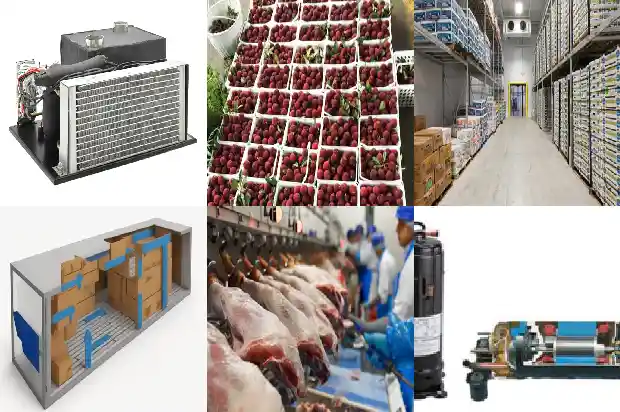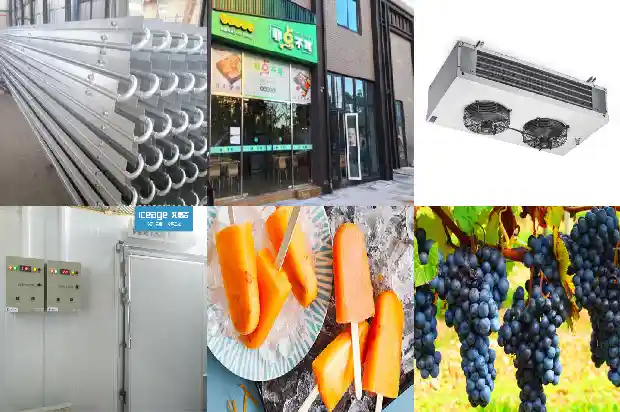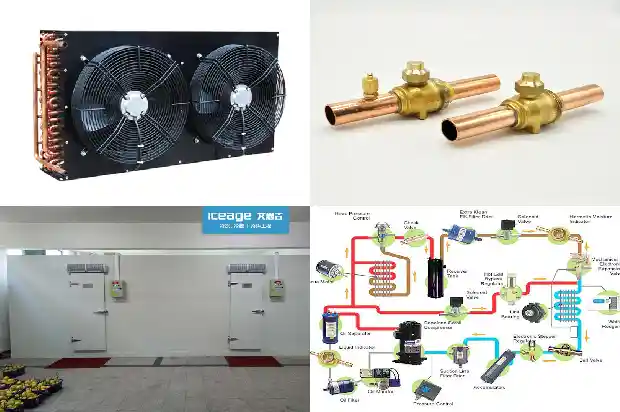Welding Equipment Used in Refrigeration System Maintenance
2025-02-14
When repairing the refrigeration system, commonly used welding equipment includes acetylene - oxygen welding equipment, portable welding equipment, liquefied petroleum gas - oxygen welding equipment, etc.
I. Acetylene - Oxygen Welding
Acetylene - oxygen welding is one of the most common types of brazing. The complete set of welding equipment consists of an acetylene gas cylinder, an oxygen gas cylinder, rubber gas delivery hoses, pressure regulators, and a welding torch.
- Oxygen Gas Cylinder: It is a high - pressure container for storing and transporting oxygen. Generally, its volume is 40L, and the standard pressure is about 1.5MPa. A pressure gauge is installed at the bottle - mouth joint to indicate the pressure of oxygen, and the pressure - reducing regulating valve indicates the adjusted oxygen pressure. The volume of the gas cylinder used for maintenance is about 2 - 10L.
- Acetylene Gas Cylinder: It is a high - pressure container for storing and transporting acetylene. The maximum gauge pressure of the gas cylinder is 2.0 MPa. Acetylene contains 93% carbon and 7% hydrogen. When mixed with pure oxygen and ignited, it generates a high - temperature flame.
- Rubber Hoses: Also known as gas delivery hoses or connecting hoses. One is the oxygen gas delivery rubber hose, and the other is the acetylene gas delivery rubber hose. The oxygen gas delivery rubber hose is red, with an inner diameter of 8mm, a working pressure of 1.8MPa, and a test pressure of 3.0MPa. The acetylene gas delivery rubber hose is black, with an inner diameter of 10mm and a working pressure of 0.5MPa.
The length of the gas delivery hose is 10 - 15m, and it should not be shorter than 5m. If the pipeline is too long, it is likely to increase the resistance to gas - flow.
- Pressure Regulator: Also called a pressure - regulating valve or a pressure adjuster. There are two types of pressure regulators: oxygen pressure regulators and acetylene pressure regulators. It is a regulating device that reduces the pressure of the high - pressure gas in the gas cylinder to the pressure required for gas welding.

- Welding Torch: Also called a welding gun. It is a tool used to mix oxygen and acetylene in the correct proportion and carry out welding with the ignited high - temperature flame.
II. Liquefied Petroleum Gas - Oxygen Welding Equipment
The usage method of liquefied petroleum gas - oxygen welding equipment is basically the same as that of acetylene - oxygen welding equipment. The storage capacity of liquefied petroleum gas is generally 3 - 15Kg, and the maximum working pressure is about 2.0MPa. A special pressure regulator is equipped on the gas cylinder when it leaves the factory, and no adjustment is required during use.

III. Portable Welding Equipment
Portable welding equipment is made smaller and lighter in volume and weight, which is convenient to carry and suitable for maintenance personnel to take when providing on - site services. It uses liquefied gas, liquefied butane gas, or gas as fuel and oxygen for combustion support. Before use, like ordinary gas - welding tools, the welding hose, gas cylinder, cylinder valve, pressure regulator, etc. should be checked first. Only after they are confirmed to be normal can it be used.

Precautions for Using Acetylene Gas Cylinders
- The acetylene gas cylinder should not be subjected to severe vibration and impact, and the gas cylinder should be placed upright.
- When opening the cylinder valve of the acetylene gas cylinder, slowly turn the screw. It is strictly prohibited to open it more than one - and - a - half turns. Generally, it is only opened to within 3/4 of a turn so that the cylinder valve can be quickly closed in case of an emergency. A special square - hole socket wrench should be used to open and close the cylinder valve. Do not use an ordinary wrench instead of the special wrench to avoid damaging the square tenon at the end of the valve stem.
- The placement location of the acetylene gas cylinder should be at least 10 meters away from an open flame. It is strictly prohibited to expose it to the sun and place it close to a heat source. Generally, the temperature of the cylinder body should not exceed 30 - 40℃.
- The gas in the acetylene gas cylinder cannot be used up completely. There must be a remaining gas with a gauge pressure of not less than 98 - 196KPa to prevent air from entering the cylinder and avoid explosion accidents.
- The distance between the acetylene gas cylinder and the oxygen gas cylinder should be more than 5 meters, and the distance from the gas - welding operation position should also be more than 5 meters.
- The acetylene gas cylinder should be comprehensively inspected every three years. It can be used continuously only after passing the inspection.
Precautions for Using Oxygen Gas Cylinders
- The paint color on the surface of the oxygen gas cylinder should meet the requirements of the gas - cylinder safety inspection regulations, and all accessories should be intact.
- The oxygen gas cylinder should generally be placed upright and must be firmly placed to prevent tipping. It is strictly prohibited to expose it to direct sunlight or place it close to a heat source to prevent the pressure in the cylinder from increasing sharply due to excessive temperature rise, causing an explosion.
- When moving the gas cylinder, the cylinder cap must be put on. It is strictly prohibited to strike the cylinder cap with hard objects such as a sledgehammer.
- It is strictly prohibited for flammable substances and grease to come into contact with the oxygen cylinder valve, oxygen pressure regulator, welding torch, and oxygen rubber hose to avoid causing a fire or explosion.
- The gas in the oxygen gas cylinder cannot be used up completely. There must be a remaining gas with a gauge pressure of not less than 98 - 196KPa.
- The oxygen gas cylinder should be comprehensively inspected every three years. It can be used continuously only after passing the inspection.
Related Articles
- Instructions for Welding and Drainage in the Installation of Refrigeration Equipment Pipelines
- Multi-split air conditioner: Nitrogen charging for welding, pressure maintaining, vacuuming and refrigerant charging
- Experience Sharing on Refrigeration Welding Operations
- Oxyacetylene Welding Operation Method for Refrigeration Pipes
- Practical Knowledge on Freeze Protection of Air - conditioning Equipment
- What Are the Differences Between Chillers and General Water - cooled Equipment?
- What Vacuum Requirements Do Cold Storage Equipment Have?
- What are Refrigeration Equipment? What's the Principle of Chillers?
- Eight Misconceptions in Refrigeration Equipment Repair
- What Is the Working Principle of Refrigeration Equipment?
- How to Identify the Quality of Refrigeration Equipment Installation Materials?
- How to Identify Installation Materials for Refrigeration Equipment
- How to Prevent Freezing for Air Conditioning Refrigeration Equipment?
- Introduction to Vapor Barrier of Cold Storage and Moisture Protection of Equipment
- Cleaning Methods for Refrigeration Equipment
- Pressure Gauge in Refrigeration Equipment
- Defrosting Operation Modes of Refrigeration Equipment and Its Control Components
- Installation and Oil Return Precautions for Refrigeration Equipment Pipelines
